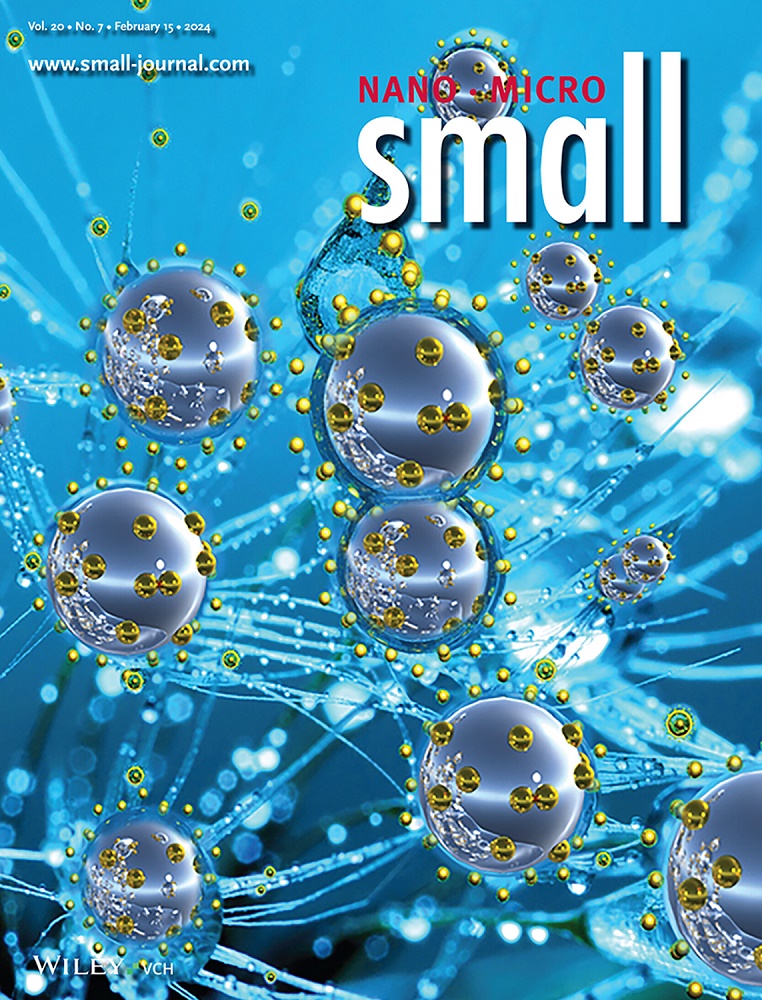Exploring Xanthan Gum as a Plasticizer in Silk Fibroin/Gelatin Films: Toward Self-Assemblies, Robust, and Cytocompatible Structures.
IF 12.1
2区 材料科学
Q1 CHEMISTRY, MULTIDISCIPLINARY
引用次数: 0
Abstract
Protein-based films resemble the ECM matrix and facilitate tissue regeneration, which makes them suitable polymers for biomedical applications. However, they often lack flexibility, which reduces their utility. The addition of plasticizers reduces the molecular interactions responsible for brittleness of these biopolymers, thereby rendering them flexible. This study explores the use of xanthan gum (XG) as a plasticizer in silk fibroin (SF) and gelatin (G) films, presenting a novel approach to developing a flexible matrix. The gelation kinetic studies assess the evolution of storage modulus (G') as a function of time to determine the structural network formation. The addition of XG molecules improves the matrix's flexibility and elongation, as confirmed using tensile strength. Raman spectra confirm β-sheet formation, while X-ray diffraction shows structural changes. The cytocompatibility of developed films is assessed using the MTT assay, while cell adhesion and morphology are studied using SEM, and live/dead assay with L929 cells. Furthermore, ROS production is assessed using the DCFH assay. Immunocompatibility of the films is evaluated by analyzing TNF-α and IL-6 genes in RAW 264.7 cells. The hemolysis of developed films is assessed to evaluate their blood compatibility. The SF/G/XG films showed transparency, stability, and enhanced mechanical properties, making them suitable for biomedical applications.探索黄原胶在丝素/明胶薄膜中的增塑剂:朝向自组装、稳健和细胞相容的结构。
基于蛋白质的薄膜类似于ECM基质,促进组织再生,这使它们成为生物医学应用的合适聚合物。然而,它们往往缺乏灵活性,这降低了它们的实用性。增塑剂的加入减少了导致这些生物聚合物脆性的分子相互作用,从而使它们具有柔韧性。本研究探讨了黄原胶(XG)作为丝素(SF)和明胶(G)薄膜增塑剂的使用,提出了一种开发柔性基质的新方法。凝胶动力学研究评估存储模量(G')作为时间函数的演变,以确定结构网络的形成。XG分子的加入提高了基体的柔韧性和伸长率,通过抗拉强度证实了这一点。拉曼光谱证实了β-薄片的形成,而x射线衍射显示了结构的变化。使用MTT法评估显影膜的细胞相容性,同时使用SEM研究细胞粘附和形态学,并使用L929细胞进行活/死试验。此外,使用DCFH测定法评估ROS的产生。通过分析RAW 264.7细胞的TNF-α和IL-6基因来评价膜的免疫相容性。评价显影膜的溶血情况以评价其血液相容性。SF/G/XG薄膜表现出透明、稳定和增强的机械性能,使其适合生物医学应用。
本文章由计算机程序翻译,如有差异,请以英文原文为准。
求助全文
约1分钟内获得全文
求助全文
来源期刊

Small
工程技术-材料科学:综合
CiteScore
17.70
自引率
3.80%
发文量
1830
审稿时长
2.1 months
期刊介绍:
Small serves as an exceptional platform for both experimental and theoretical studies in fundamental and applied interdisciplinary research at the nano- and microscale. The journal offers a compelling mix of peer-reviewed Research Articles, Reviews, Perspectives, and Comments.
With a remarkable 2022 Journal Impact Factor of 13.3 (Journal Citation Reports from Clarivate Analytics, 2023), Small remains among the top multidisciplinary journals, covering a wide range of topics at the interface of materials science, chemistry, physics, engineering, medicine, and biology.
Small's readership includes biochemists, biologists, biomedical scientists, chemists, engineers, information technologists, materials scientists, physicists, and theoreticians alike.
 求助内容:
求助内容: 应助结果提醒方式:
应助结果提醒方式:


